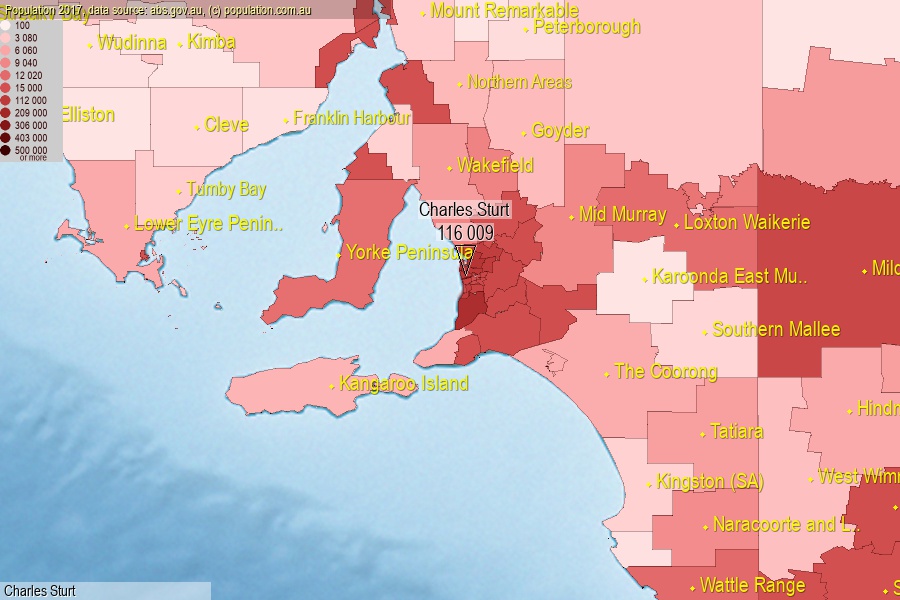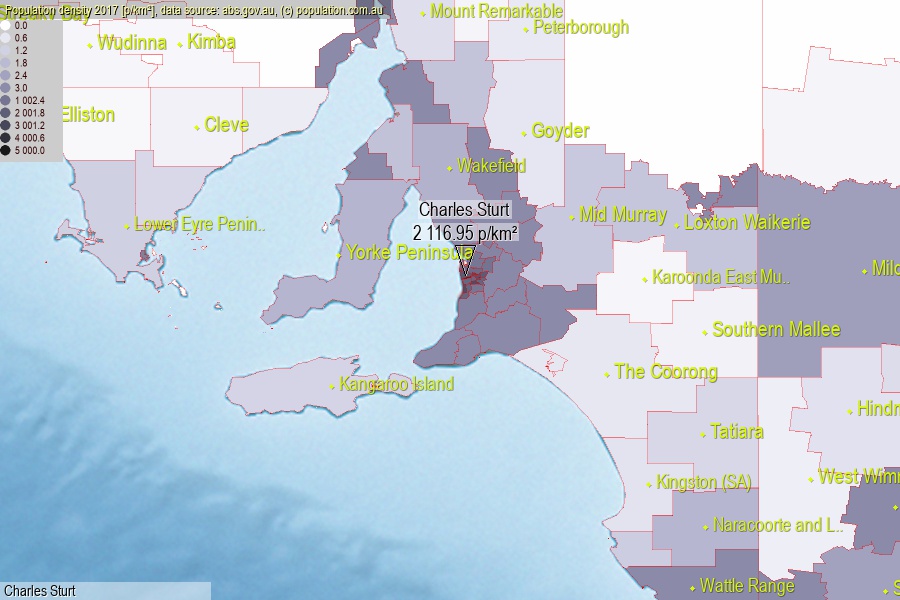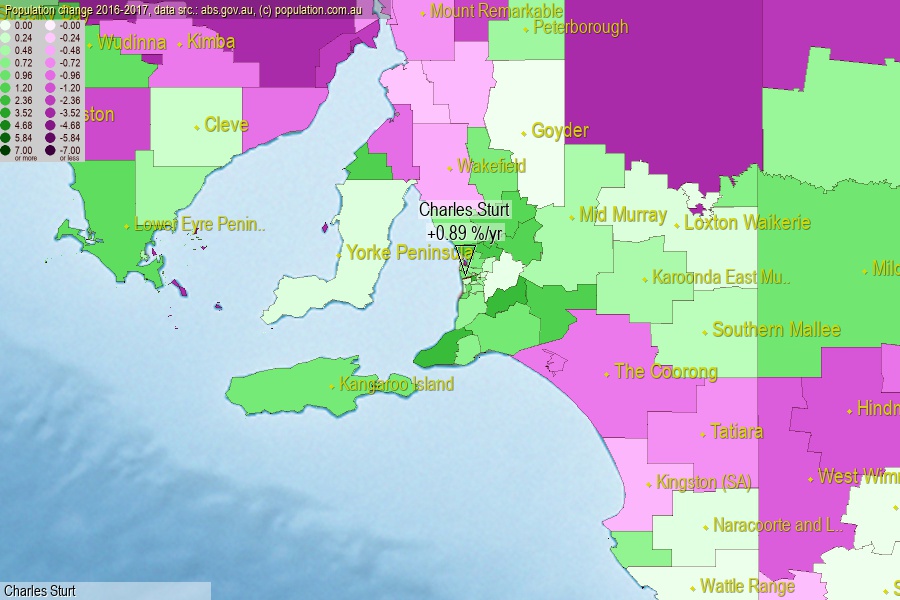 population.com.au
population.com.auLast official estimated population of Charles Sturt City (as Local Government Area) was 116 009 people (on 2017-06-30)[2]. This was 0.47% of total Australian population and 6.692% of SA population. Area of Charles Sturt is 54.80 km², in this year population density was 2 116.95 p/km² . If population growth rate would be same as in period 2016-2017 (+0.89%/yr), Charles Sturt population in 2025 would be 124 580. [0]



Click to enlarge. Charles Sturt is located in the center of the images.
Population [people], population density [p./km²] and population change [%/year] [2]
[1996-2001] +0.08 %/Y
[2001-2002] -0.01 %/Y
[2002-2003] -0.10 %/Y
[2003-2004] -0.02 %/Y
[2004-2005] +0.04 %/Y
[2005-2006] +0.55 %/Y
[2006-2007] +0.52 %/Y
[2007-2008] +0.84 %/Y
[2008-2009] +1.48 %/Y
[2009-2010] +1.26 %/Y
[2010-2011] +0.95 %/Y
[2011-2012] +1.26 %/Y
[2012-2013] +1.16 %/Y
[2013-2014] +1.37 %/Y
[2014-2015] +1.13 %/Y
[2015-2016] +0.75 %/Y
[2016-2017] +0.89 %/Y
[0] Calculated with linear interpolation from officially estimated population
[1] Read more about LGA and Australian Statistical Geography Standard (ASGS) on abs.gov.au
[2] Population data from Australian Bureau of Statistics (Population and density: 2017; change: 2016-2017)
[3] Digital Boundaries: Australian Statistical Geography Standard (ASGS) 2016.